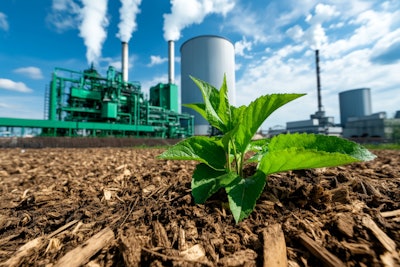
Global food production is projected to increase by 2.4% in 2025 and by 3.1% in 2026, according to research revealed by Atradius.
Annual global food sales are in the same range. Among regions, Asia Pacific is expected to record above-average growth rates of more than 3% this year and 5% in 2026, while North America’s food production is forecast to grow only modestly in 2025 and 2026 (0.4% and 0.3% respectively).
“Compared to other industries, the direct impact of tariffs on the food and beverages sector is modest, given a relatively low trade exposure and the perishable nature of output, which makes large cross-border trade costly and less economically viable,” the Atradius study says. “The food and drink industry benefits from regional self-sufficiency, although some specific product categories could face vulnerabilities. However, there is an indirect impact from tariffs in the form of lower economic growth and higher inflation, affecting disposable household incomes. For the food sector this could mean that consumers buy goods at lower price points, reduce spending on non-essential food and drink products and maintain rather than increase their consumption level.”
Key takeaways:
· The slide in food commodity prices, that was set in motion after the shock of the February 2022 Russian invasion in Ukraine faded, has continued. Food prices decreased further quarter-on-quarter in Q1 2025, supported by better growing conditions in South America. Due to ample supply conditions global food prices are forecast to decrease in 2025 and then stabilize in 2026.
· Expect U.S. food and beverages output to increase by 0.8% in 2025 and to level off next year. Despite some easing, food price inflation will continue to put pressure on household budgets, which affects purchasing patterns. Actual price levels remain high, especially in some essential food categories.
· In the grocery retail sector, U.S. households still face food prices that are almost 30% higher than pre-COVID.
· Tariffs imposed on Canada and Mexico are an issue. Almost 44% of U.S. food imports come from these two markets, with fruit prices particularly exposed.
· Expect Brazilian food output to grow by 2.1% in 2025, followed by a 2.7% increase in 2026. The food and beverage market shows resilience despite economic headwinds.
· Food and beverage production in Mexico is expected to slow down slightly 2025, followed by a rebound next year. The impact of U.S. tariffs remains a downside risk in the coming months, as they could increase prices for consumers and disrupt supply chains.
· Expect Chinese food and beverages output to grow by 4.8% in 2025 and by 6.4% next year. Household spending is likely to gain momentum in the second half of 2025 due to reinvigorated policy efforts to stabilize jobs, increase wages, and support spending.
· In 2025, food sector growth will be supported by the early onset of the annual monsoon, bolstering agricultural output and increasing rural household incomes (about 60% of workers are engaged in the agricultural sector).
· Good harvests limit price pressure on food items (those account for about half of the consumption basket). Sector growth will also be driven by population growth and rising household incomes and living standards.
· Rapid urbanization is driving demand for convenient and packaged foods as urban consumers seek quick and easy meal solutions.
· In Indonesia, the food and beverages industry provides a significant contribution to economic growth and job creation. Expect production and sales to grow by about 2.5% annually in 2025 and 2026. The increase is driven by population growth and a rising middle class with higher purchasing power.
· After a 2.8% increase in 2024, food and beverages production in the EU is forecast to grow by 2.1 % in 2025 and 1.4% in 2026. Foods sales are expected to increase by 1.5% this year. Private consumption is still underpinned by modest gains in employment and wage growth. After a 2.6% increase in 2024, food sales in the UK will stagnate in 2025 and contract by 1.6% next year. Consumer confidence is weak and wage growth has slowed in the UK.




















